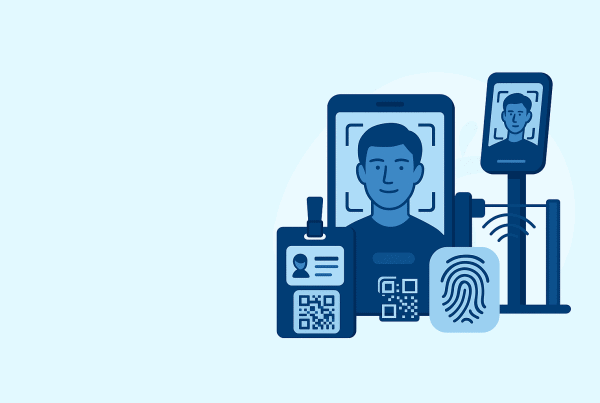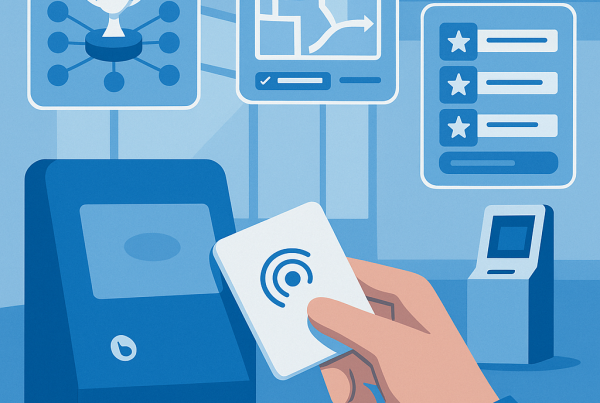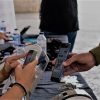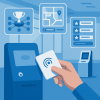The events industry is already at the forefront of digital transformation, and the examples and success cases inspire and challenge the frontier of possibilities everyday – from attendee engagement, networking and trade show prospecting to new event business models. Can in-person events be phygital? If yes, how to master digital transformation in the events industry to boost event sales?
In the quest for specialized answers, we decided to conduct a blog interview with Alina Lehtinen-Vela, Content Marketing Manager at giosg and eCommerce expert. And the question we put on the table was how and in what ways would it be likely to turn an in-person event into an eCommerce shopping experience. Let’s look at the answers?
1. How do you imagine the consumer’s shopping experience during an in-person event nowadays?
Consumers expect more interactions online and offline. The future of retail will take the best parts of offline and online experiences and merge them into one memorable experience. The term that describes this combination of physical and digital is phygital. Going phygital means connecting with customers on multiple fronts. We see this already happening with retailers. Many are bringing digital elements to their stores. A good example of this is Levi’s which added digital touch screens to some of its retail locations. These screens bring valuable data to the retail store about what type of jeans people are looking for. This data can be used to stock more of those items people search for in that specific store location.
2. What’s your perception about how digital transformation can revolutionize the customer journey and sales processes in B2B events?
Digitalization offers tools for B2B businesses to showcase their products at events in a more interactive way. For example, at giosg we have been able to do live demos of our products at events with the help of modern event technology. Visualizations of the products and how they can help prospects to achieve their goals are extremely powerful in selling. So, digital transformation at B2B events has most likely helped B2B businesses to increase average order value in eCommerce.
3. Do you believe ROPO methodology (Research Online, Purchase Offline) can see its paradigm reversed within the context of trade shows and other product launch events?
I think this is happening already. Live shopping increment is one of the most promising online shopping trends. Many people, including myself, check products at retail stores but buy them online. Especially with certain high-value products, customers tend to want to experience the product live before purchasing. Already Apple has done these types of launch events very successfully. Every Apple fan knows that Apple launches new products in the fall. Apple Stores are backed with people checking out the product after the launch event. I bet many visitors end up buying the product online after experiencing it live.
4. How do you think an events platform can deliver more personalized live event experiences and contribute to a hybrid purchase model?
Interactions are the key to making a connection with the audience. It is important to use the right tools to improve attendee experience and engagement. This is especially important for events that are fully or partly virtual. Using quizzes, polls and ice breakers can work well to wake up the audience in between sessions. Also, make sure that the content is highly targeted to the audience to educate them on the topics that they are interested in. To do this, you will need to do your research on the audience but you can also ask for feedback beforehand. For example, you can ask participants to select specific topics that they would be most interested in learning more about. You can use this data to see which participants are the most interested in the issues that your solution can solve. This in return can help you sell your products to them faster.
5. What do you think are the best interactive tools to boost and measure customer conversion rates within in-person event experiences?
This depends on what you are selling. One good one I saw at an event in Stockholm was a clothing brand that let you design and print your own bag or T-shirt on the spot. This kind of interactive experience that combines virtual design tools and a physical printer can be very convincing. And a product can not get more customized than that.
6. In what ways can we carry over the most engaging eCommerce tools to a live event?
You could do a live event that is also streamed online as a live shopping event. This way you can get sales both physically and digitally. Having an audience makes the event more exciting for those who view it online too. Also, AR tools that combine the real world with digital elements, can help you create memorable experiences at a live event. With AR tools, visitors can experience your products virtually in the real world.








